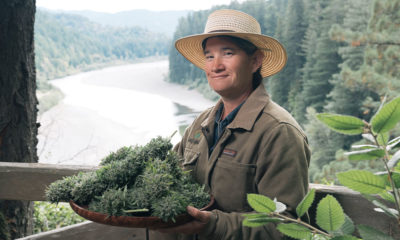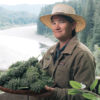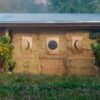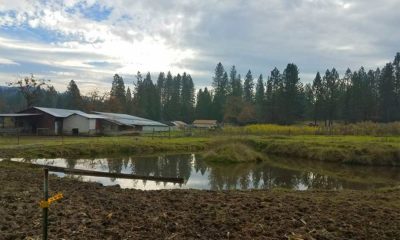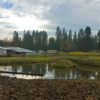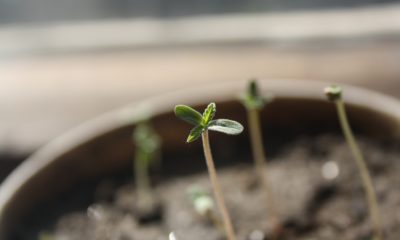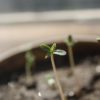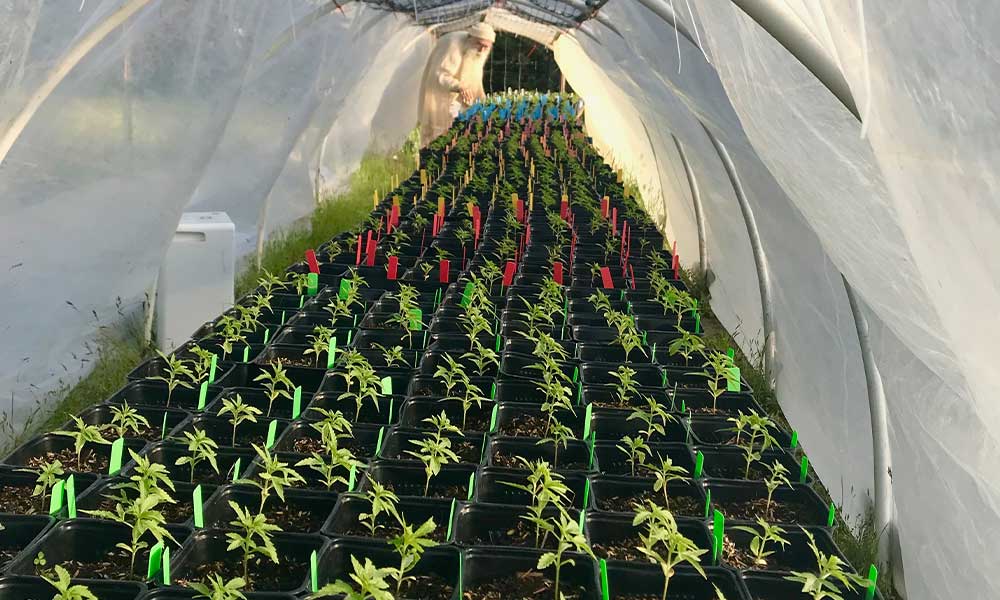
Cultivation
How a Cold Spring Stunted Cannabis Seedlings
Northern California saw an irregularly wet and cold spring, resulting in numerous delays and smaller plant starts. Swami shares how his team dealt with the ups and downs of weather and how, despite the delays, the plants are now happy and thriving in the garden.
“It’s farmin’” I like to say every time there is a minor crisis or impending disaster brought on by the weather, a broken water line in the irrigation system, or a broken water pump on the tractor. And just when you think you’ve made every mistake or solved every problem about growing the crop, some new crisis needs a solution, right away. This year, we dealt with the challenges of an unusually cold spring which led to stunted cannabis seedlings and delays in the grow cycle.
Last year’s crisis involved the delicate cannabis seedling starts which were being eaten by a family of field mice living under some boards we had laid on the ground to create a level floor for the 2- and 3-gallon pots. The exposed tender starts were like a salad bar for the mice, and they chowed down, consuming nearly one quarter of all the starts. To solve that problem this spring, we put all the pots up on tables and put the table legs in bins with water. To save on potting soil, we used 4-inch mini pots filled with a mixture of coir, rice hulls and worm castings.
Challenges are bound to come up when growing outdoors in the sun, and moving with the ups and downs of Mother Nature. We are always learning and growing alongside our garden.
A Rollercoaster of Rain and Sun
In early April, as soon as we cracked our seeds and put them in the planting medium, the weather literally ran amok. It was a weather rollercoaster. First rain, then hail, then snow, then brilliant sunshine and 70- or 80-degree temps, followed again by rain and below freezing nights. This unusual pattern continued through the spring.
Only later did we realize that the tiny pots were a mistake, due to the freak weather—there was so little medium in the mini pots that the temperature around the roots fluctuated to the extreme weather changes. A two- or three-gallon pot might have protected the roots better.
At one point I considered getting heating pads to put under the tiny pots, but I decided not to because it would require a running generator all night. Besides, it was bound to warm up soon. Well, it didn’t warm up. In hindsight, we probably should have bought the heating pads when I first thought of them.
As anyone in Northern California can attest, the weather in 2022, from January on, was unprecedented. Actually, it wasn’t January—it was really “June-uary,” as the weather was so hot and dry. February, too, got a new name as the heat and dry continued: “Febru-uly.” It was the most days without rain in those two months for as long as records have been kept. Climatologists looking at tree rings and glaciers proclaimed it the driest three years since 821 CE, twelve hundred years ago. So, the last thing we expected going into planting season was cold.
Moving With the Changes
To deal with the unpredictable weather, a long tunnel was erected with rebar, PVC and greenhouse plastic. A propane heater was brought in for the frigid nights, but at times there was such heavy condensation on the inside of the greenhouse fabric that a dehumidifier was needed. That meant using a generator, so it was kept to a minimum. Then again, sometimes it got so warm and humid during the day that the sides and ends had to be opened up.
But the next morning at 4 a.m., it would be 26 degrees. The poor little sprouts—at first only the rounded cotyledon leaves, then the first pointed saw-toothed single leaf—nearly froze to death. In the morning, it was noticed that the tiny stalks had turned a pale pink purple from the cold.
A day or so later, the sun would come out, and it seemed like it was starting to warm up again. Spring was finally here! Boom! But the next day brought grey skies and rain. In mid-May, we even got snow. Then. It was then suddenly 80 degrees again, followed by another cold spell, alternating all through May and on into June. It even rained on the Fourth of July.
Lessons Learned
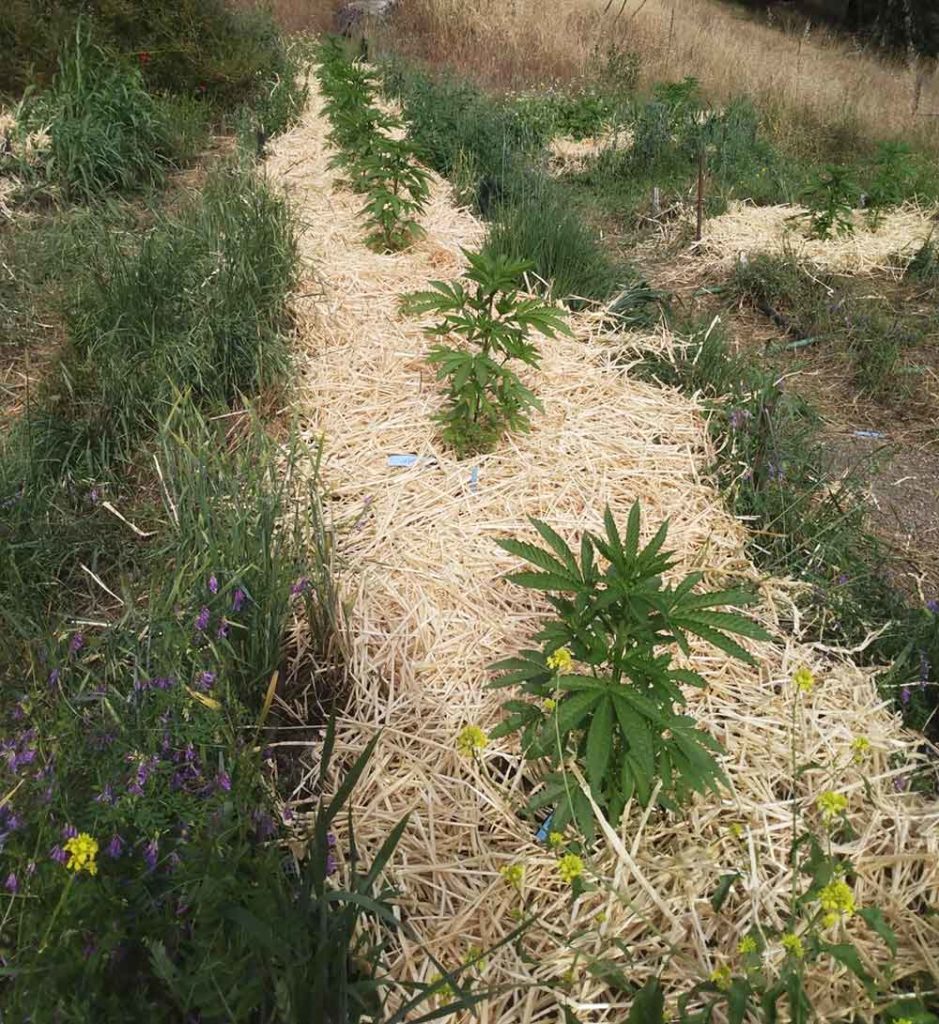
The poor plants were cold, confused, anxious and stunted, and we were going crazy trying to keep up with the changes. I guess the lesson is that we should have bought the heating pads early on and used the generator anyway, but I am trying to be a friend of the environment and run a legal cannabis business at the same time.
The good news is that we did get the rain we so desperately needed to ease the drought. After the super dry June-uary and Febru-uly, at the beginning of May our pond was not yet full, and the impending drought looked dire. Thankfully, all those late rains did finally fill Lake Rubbadukky up to the culvert.
Other farmers up on Bell Springs, and all over the Emerald Triangle, have likewise been affected by the cold, rainy weather. One friend said he had never planted such small cannabis starts. I answered, somewhat sardonically, that it was really just part of the conditions of our terroir, one of the natural stresses which makes our weed special.
Even the owner of Eel River Hay up in Fortuna, where we get our organic straw for mulch, was saying that the alfalfa and quinoa crops up in Humboldt County have been stunted and will produce their smallest yield ever.
Our cannabis starts were so tiny that we had to delay the gender testing from Leafworks. The inclement weather also delayed work on preparing the beds for planting. Pouring rain is not the best weather for the crew to work in the garden.
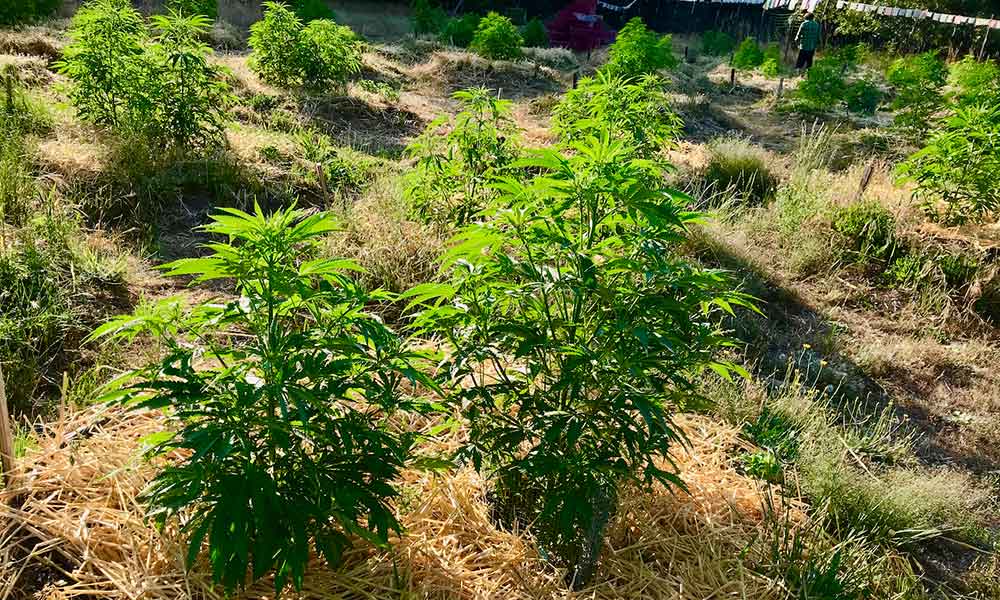
Now, as I write this in mid-July, the little girls are safely tucked into their beds in the garden. After several soil drenchings with compost tea brews and foliar feedings, they are starting to bush out and spurt up with their top fan leaves praying to the sun.
Even in a “normal” year our plants tend to be smaller, which we kind of like, as they are often more potent and more aromatic. We’ll see how big they get this season, but we know even these stunted cannabis seedlings will be amazing. As the saying goes, “stressing the plants brings out their innate quality.”
And as John Dryden (1631-1700) said, “Mighty things from small beginnings grow.”





